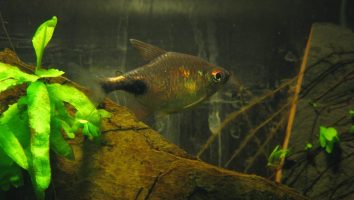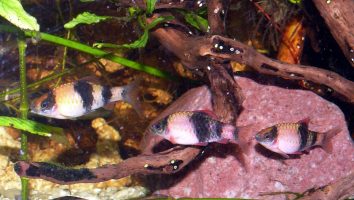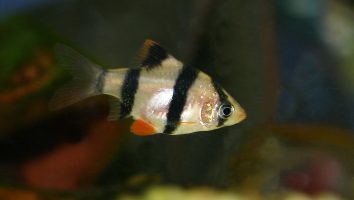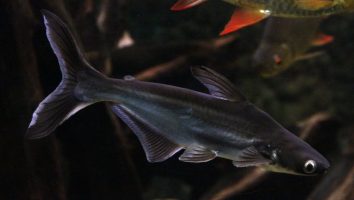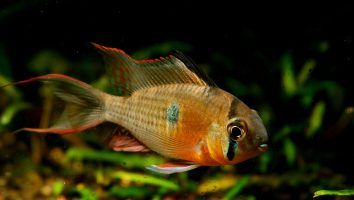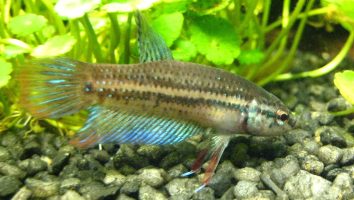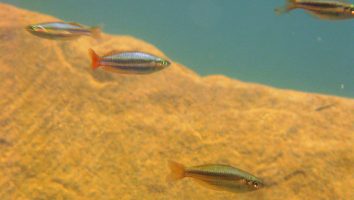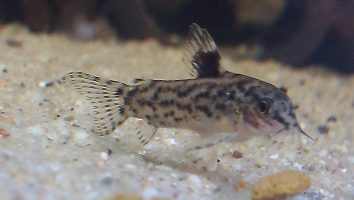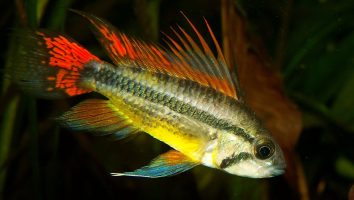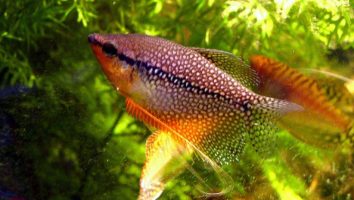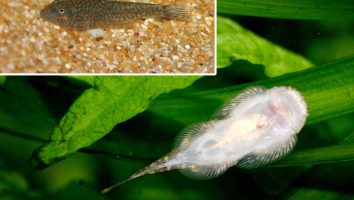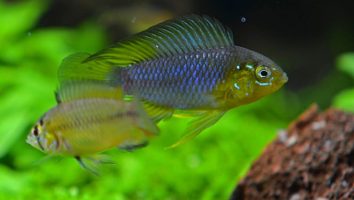The red phantom tetra is a beautiful freshwater fish that is perfect for beginners. They are easy to care for and are very peaceful, making them a great addition to any community tank.
This guide will teach you everything you need to know about red phantom tetra care. You’ll learn about their diet, size, lifespan, and more!
Table of contents
Species overview
The red phantom tetra (scientific name: Hyphessobrycon sweglesi) is a freshwater fish that’s native to the Rio Negro basin in Brazil.
They are found in slow-moving waters that are heavily planted with a lot of vegetation. This is something to keep in mind if you plan on keeping them in your own aquarium because they will need a lot of plants to feel comfortable and safe.
The diet of the red phantom tetra in the wild consists mostly of small insects and larvae. In captivity, they will accept a wide variety of foods including pellets, flakes, and frozen foods.
These fish are very peaceful and make a great addition to most community tanks. They are also very easy to care for, which makes them a good choice for beginner aquarium hobbyists.
Appearance
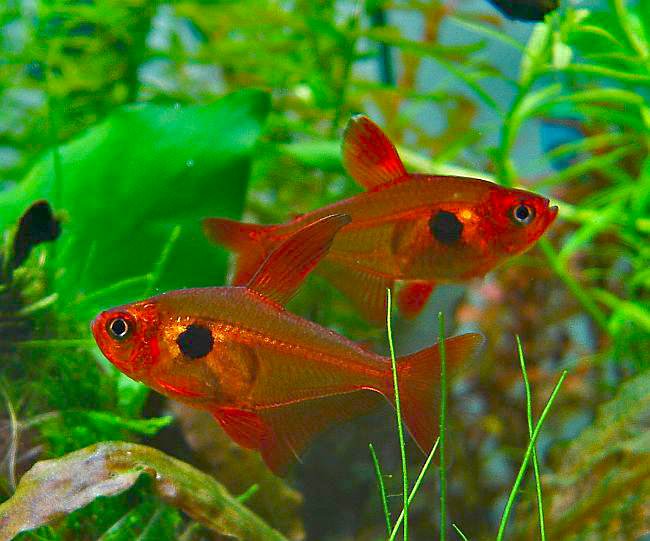
The most notable thing about this fish is their coloration. The vast majority of their body is a deep, rich red. There is a black stripe that starts at the base of their tail and goes up to their eye.
This stripe is wider in males than it is in females.
The fins on this fish are also red, with the exception of their dorsal fin. The dorsal fin has a black stripe that runs down the middle of it.
The body shape of the Red Phantom Tetra is very similar to other tetras. They’re long and thin with a slightly compressed body.
This species has a very small mouth that is turned down slightly.
Lifespan
The typical lifespan of a red phantom tetra is between three and four years. However, it’s not uncommon for these fish to live for five years or more in captivity.
As with any other pet, the lifespan of your red phantom tetra will be greatly impacted by the level of care they receive. Things like poor water quality, stress, and a suboptimal diet can all shorten their lifespan significantly.
Size
The average size of a Red Phantom Tetra is about 2 inches in length when fully grown. It’s not uncommon for these fish to stop growing at 1 inch depending on their level of care and genetic factors.
Tank
Tank Size
The minimum tank size for red phantom tetras is 30 gallons. This is assuming you’re keeping them in a school of at least 8-10 fish (which you should).
We recommend a slightly larger tank if you can accommodate it. Every extra space will make a big difference and allow you to keep a larger school or more tank mates if you’re interested in a community tank.
Water Parameters
The Red phantom tetra is a freshwater fish that is native to the waters of South America. In the wild, they inhabit slow-moving streams with plenty of vegetation.
In terms of water parameters, they prefer slightly acidic water with a pH of around 6.5. The water temperature should be between 72 and 82 degrees Fahrenheit.
As for water hardness, they prefer soft to medium-hard water. A general hardness of 4 to 8 dGH is ideal.
When it comes to alkalinity, they prefer slightly alkaline water with a level of around 6 to 8 dKH.
What To Put In Their Tank
The Red Phantom Tetra is a small freshwater fish that is a popular choice for many aquarists.
This species is very peaceful and can be kept with a wide variety of tank mates. They are also very easy to care for, which makes them a good choice for beginner aquarists.
When it comes to setting up the inside of their tank, there are a few things you’ll need to take into consideration.
The first is the substrate. These fish like to dig and look for food in the substrate, so you’ll want something that is soft and not too sharp. Gravel or sand is a good choice.
The next thing to consider is the plants. Red Phantom Tetras are not known to eat plants, but they will uproot them when they are looking for food. If you want to include plants in their tank, we recommend choosing something that is hardy and can withstand a little bit of abuse.
When it comes to decorations, these fish are not too picky. They do like to have hiding places though, so we recommend including some driftwood, rocks, or caves in their tank.
Common Diseases
Red phantom tetras are pretty hardy fish, but that doesn’t mean they can’t get sick. The most common disease that affects this species is ich, which is a fairly common freshwater parasite.
This will present itself as white spots on the body, fish, and gills of your fish. We won’t do a full ich treatment guide here (there are plenty of those online) but it’s something you need to take very seriously if it affects your red phantom tetra.
Other potential diseases include infections, parasites, and even tumors. Again, these are all fairly common in the fish world and nothing to be too worried about as long as you keep an eye on your fish and act quickly if something seems wrong.
The best way to keep your red phantom tetra healthy is to simply provide them with a clean and stable habitat. This means regular water changes, a good filtration system, and avoiding overfeeding.
If you can do all of those things, your fish will be much less likely to get sick in the first place. But even the healthiest fish can get sick from time to time, so it’s always important to be on the lookout for anything out of the ordinary.
Behavior & Temperament
The red phantom tetra is a peaceful fish that does well in groups. In the wild, they school together for protection and will do the same in your aquarium.
These fish are relatively active and love to swim around. They’re not afraid to explore every nook and cranny of their environment. So, it’s important to make sure they have plenty of hiding places. Otherwise, they may feel stressed.
When it comes to food, the red phantom tetra is not picky. They’ll eat just about anything you give them. However, it’s important to provide them with a well-rounded diet. This will ensure they get all the nutrients they need to stay healthy.
Tank Mates
The best tank mates for red phantom tetras are other peaceful fish that occupy different areas of the aquarium.
These fish are shy by nature and need a little bit of extra space to feel comfortable. As a result, a densely packed tank is not ideal.
Red phantom tetras do best in a group of at least six fish. This way, they can school together and feel more secure.
Some other good tank mates for red phantom tetras include:
- Ember Tetras
- Cardinal Tetras
- Neon Tetras
- Ghost Shrimp
- Otocinclus Catfish
- Corydoras Catfish
Breeding
The red phantom tetra is one of the easiest fish to breed in captivity. They are widely available and very easy to care for. They are also one of the most prolific breeders, so you will likely end up with more fish than you know what to do with!
The first step is to set up a breeding tank. It should be at least 10 gallons in size, but 20 gallons is better. The tank should be well-filtered and have a tight-fitting lid.
Phantom tetras are best bred in pairs. So, you will need to purchase two fish. It is best to buy a group of 6-8 fish and let them pair off naturally. If you want to handpick your pairs, look for pairs that seem to be chasing each other around.
Once you have your pairs, put them in the breeding tank. The water should be soft and acidic, with a pH of 6.0-6.5. The temperature should be around 75 degrees Fahrenheit.
You don’t need to do anything special to trigger spawning. The fish will breed on their own when they are ready. The female will lay her eggs on plants or other surfaces in the tank. The male will then fertilize the eggs.
The eggs will hatch in about 24 hours. The fry are very small and will need to be fed baby brine shrimp or other small live foods. They can also be fed commercial fry foods.
The fry will grow quickly and will be ready to be moved to a larger tank in about 6 weeks.
Conclusion
The Red Phantom Tetra is a beautiful and peaceful fish that is perfect for the beginning fish keeper. They are easy to care for, and will do well in a community tank with other peaceful fish.
The only downside to this fish is that they are notorious jumpers, so be sure to have a lid on your tank!
Other than that, we think they’re a perfect addition to any tank, and we’re sure you will too.

